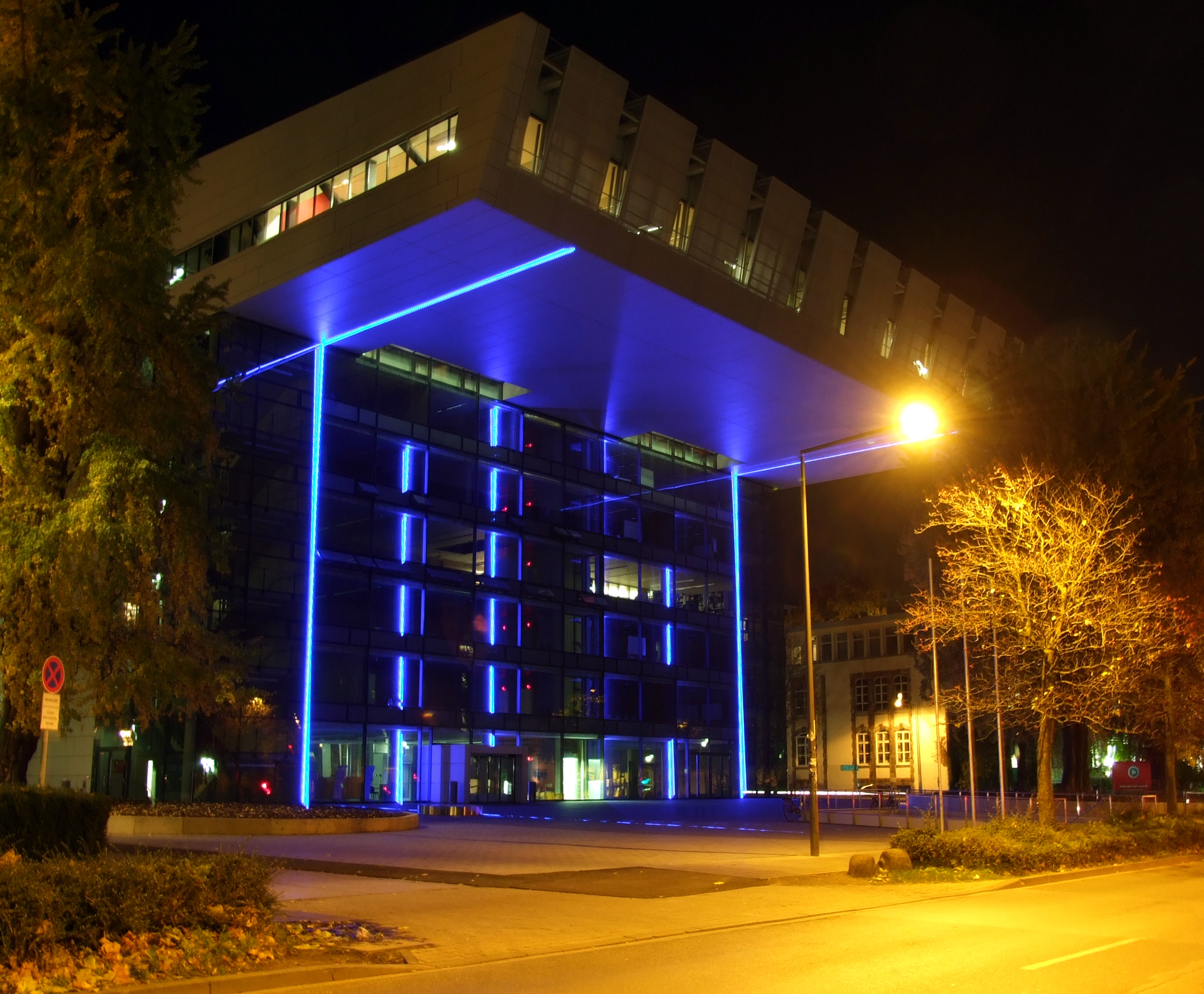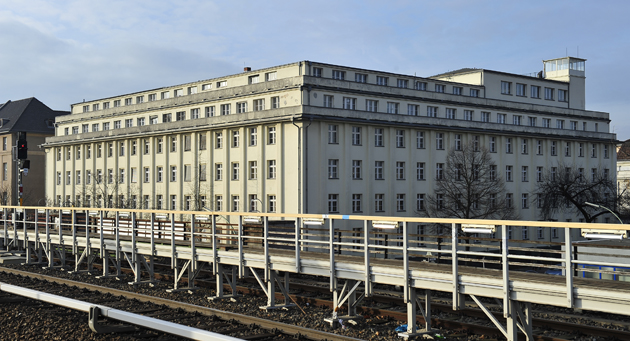|
Werner Gruner
Werner Gruner (1904–1995) was a small-arms designer, mechanical engineer, university teacher and from 1958 to 1961 rector of the Dresden University of Technology. Life and work before 1945 Gruner was born on June 7, 1904 in the village Terpitzsch, then belonging to the municipality Zschadraß, which since January 1, 2011 is part of the town Colditz on the banks of the Zwickauer Mulde near its confluence with the Freiberger Mulde to form the Mulde 3.5 km north of the town. His father taught in a ''Volksschule'' and he attended the ''Realgymnasium'' in Döbeln. In 1923 Gruner ended his secondary education in Leipzig with the abitur and was enrolled at the ''Technical University of Dresden'' in the same year. He studied mechanical engineering from 1923 to 1928 and after graduating (Dr.-Ing.) worked there as a research assistant for another four years till 1932,bundesstiftung-aufarbeitung.deBiographical information from the handbook "Who was who in the GDR?": Werner ... [...More Info...] [...Related Items...] OR: [Wikipedia] [Google] [Baidu] |
Zschadraß
Zschadraß is a village and a former municipality in the Leipzig district in Saxony, Germany. Since 1 January 2011, it is part of the town Colditz. Statistisches Bundesamt
The Federal Statistical Office (german: Statistisches Bundesamt, shortened ''Destatis'') is a federal authority of Germany. It reports to the Federal Ministry of the Interior.
The Office is responsible for collecting, processing, presenting and ...
References External links [...More Info...] [...Related Items...] OR: [Wikipedia] [Google] [Baidu] |
Secondary Education
Secondary education or post-primary education covers two phases on the International Standard Classification of Education scale. Level 2 or lower secondary education (less commonly junior secondary education) is considered the second and final phase of basic education, and level 3 (upper) secondary education or senior secondary education is the stage before tertiary education. Every country aims to provide basic education, but the systems and terminology remain unique to them. Secondary education typically takes place after six years of primary education and is followed by higher education, vocational education or employment. In most countries secondary education is compulsory education, compulsory, at least until the age of 16. Children typically enter the lower secondary phase around age 12. Compulsory education sometimes extends to age 19. Since 1989, education has been seen as a basic human right for a child; Article 28, of the Convention on the Rights of the Child states that ... [...More Info...] [...Related Items...] OR: [Wikipedia] [Google] [Baidu] |
Emeritus
''Emeritus'' (; female: ''emerita'') is an adjective used to designate a retired chair, professor, pastor, bishop, pope, director, president, prime minister, rabbi, emperor, or other person who has been "permitted to retain as an honorary title the rank of the last office held". In some cases, the term is conferred automatically upon all persons who retire at a given rank, but in others, it remains a mark of distinguished service awarded selectively on retirement. It is also used when a person of distinction in a profession retires or hands over the position, enabling their former rank to be retained in their title, e.g., "professor emeritus". The term ''emeritus'' does not necessarily signify that a person has relinquished all the duties of their former position, and they may continue to exercise some of them. In the description of deceased professors emeritus listed at U.S. universities, the title ''emeritus'' is replaced by indicating the years of their appointmentsThe Protoc ... [...More Info...] [...Related Items...] OR: [Wikipedia] [Google] [Baidu] |
Soviet Military Administration In Germany
The Soviet Military Administration in Germany (russian: Советская военная администрация в Германии, СВАГ; ''Sovyetskaya Voyennaya Administratsiya v Germanii'', SVAG; german: Sowjetische Militäradministration in Deutschland, SMAD) was the Soviet military government, headquartered in Berlin-Karlshorst, that directly ruled the Soviet occupation zone of Germany from the German surrender in May 1945 until after the establishment of the German Democratic Republic (GDR) in October 1949. According to the Potsdam Agreement in 1945, the SMAD was assigned the eastern portion of present-day Germany, consisting mostly of central Prussia. Prussia was dissolved by the Allies in 1947 and this area was divided between several German states ''(Länder)''. German lands east of the Oder-Neisse line were annexed by Soviet Union or granted to Poland, and Germans living in these areas were forcibly expelled, having had their property expropriated and been rob ... [...More Info...] [...Related Items...] OR: [Wikipedia] [Google] [Baidu] |
Red Army
The Workers' and Peasants' Red Army (Russian: Рабо́че-крестья́нская Кра́сная армия),) often shortened to the Red Army, was the army and air force of the Russian Soviet Federative Socialist Republic and, after 1922, the Union of Soviet Socialist Republics. The army was established in January 1918. The Bolsheviks raised an army to oppose the military confederations (especially the various groups collectively known as the White Army) of their adversaries during the Russian Civil War. Starting in February 1946, the Red Army, along with the Soviet Navy, embodied the main component of the Soviet Armed Forces; taking the official name of "Soviet Army", until its dissolution in 1991. The Red Army provided the largest land force in the Allied victory in the European theatre of World War II, and its invasion of Manchuria assisted the unconditional surrender of Imperial Japan. During operations on the Eastern Front, it accounted for 75–80% of casual ... [...More Info...] [...Related Items...] OR: [Wikipedia] [Google] [Baidu] |
RWTH Aachen University
RWTH Aachen University (), also known as North Rhine-Westphalia Technical University of Aachen, Rhine-Westphalia Technical University of Aachen, Technical University of Aachen, University of Aachen, or ''Rheinisch-Westfälische Technische Hochschule Aachen'', is a German public research university located in Aachen, North Rhine-Westphalia, Germany. With more than 47,000 students enrolled in 144 study programs, it is the largest technical university in Germany. In 2018, the university was ranked 31st in the world university rankings in the field of engineering and technology, and 36th world-wide in the category of natural sciences.Daten & Fakten – RWTH AACHEN UNIVERSITY – Deutsch Rwth-aachen.de (12 December 2011). Retrieved on 2013-09-18. [...More Info...] [...Related Items...] OR: [Wikipedia] [Google] [Baidu] |
Braunschweig University Of Technology
Braunschweig () or Brunswick ( , from Low German ''Brunswiek'' , Braunschweig dialect: ''Bronswiek'') is a city in Lower Saxony, Germany, north of the Harz Mountains at the farthest navigable point of the river Oker, which connects it to the North Sea via the rivers Aller and Weser. In 2016, it had a population of 250,704. A powerful and influential centre of commerce in medieval Germany, Brunswick was a member of the Hanseatic League from the 13th until the 17th century. It was the capital city of three successive states: the Principality of Brunswick-Wolfenbüttel (1269–1432, 1754–1807, and 1813–1814), the Duchy of Brunswick (1814–1918), and the Free State of Brunswick (1918–1946). Today, Brunswick is the second-largest city in Lower Saxony and a major centre of scientific research and development. History Foundation and early history The date and circumstances of the town's foundation are unknown. Tradition maintains that Brunswick was created through the mer ... [...More Info...] [...Related Items...] OR: [Wikipedia] [Google] [Baidu] |
World War II
World War II or the Second World War, often abbreviated as WWII or WW2, was a world war that lasted from 1939 to 1945. It involved the vast majority of the world's countries—including all of the great powers—forming two opposing military alliances: the Allies and the Axis powers. World War II was a total war that directly involved more than 100 million personnel from more than 30 countries. The major participants in the war threw their entire economic, industrial, and scientific capabilities behind the war effort, blurring the distinction between civilian and military resources. Aircraft played a major role in the conflict, enabling the strategic bombing of population centres and deploying the only two nuclear weapons ever used in war. World War II was by far the deadliest conflict in human history; it resulted in 70 to 85 million fatalities, mostly among civilians. Tens of millions died due to genocides (including the Holocaust), starvation, ma ... [...More Info...] [...Related Items...] OR: [Wikipedia] [Google] [Baidu] |
MG 34
The MG 34 (shortened from German: ''Maschinengewehr 34'', or "machine gun 34") is a German recoil-operated air-cooled general-purpose machine gun, first tested in 1929, introduced in 1934, and issued to units in 1936. It introduced an entirely new concept in automatic firepower – the ''Einheitsmaschinengewehr'' (Universal machine gun) – and is generally considered the world's first general-purpose machine gun (GPMG). Both the MG 34 and MG 42 were erroneously nicknamed "Spandau" by Allied troops, a carryover from the World War I nickname for the MG 08, which was produced at the Spandau Arsenal. The versatile MG 34 was chambered for the full-power 7.92×57mm Mauser rifle cartridge, and was arguably the most advanced machine gun in the world at the time of its deployment. The MG 34 was envisaged and well developed to provide portable light and medium machine gun infantry cover, anti-aircraft coverage, and even sniping ability. Its combination of exceptional mobility – being ... [...More Info...] [...Related Items...] OR: [Wikipedia] [Google] [Baidu] |
Waffenamt
''Waffenamt'' (WaA) was the German Army Weapons Agency. It was the centre for research and development of the Weimar Republic and later the Third Reich for weapons, ammunition and army equipment to the German Reichswehr and then Wehrmacht The ''Wehrmacht'' (, ) were the unified armed forces of Nazi Germany from 1935 to 1945. It consisted of the ''Heer'' (army), the ''Kriegsmarine'' (navy) and the ''Luftwaffe'' (air force). The designation "''Wehrmacht''" replaced the previous .... It was founded 8 November 1919 as ''Reichwaffenamt'' (RWA), and 5 May 1922 the name was changed to ''Heereswaffenamt'' (HWA). The task of overseeing Germany's gigantic pre-World War II rearmament program was given to the ''Heeresabnahmestelle'' (the Army Acceptance Organization, commonly referred to as the ''Abnahme''), a subsidiary of the ''Heereswaffenamt''. By 1940 the ''Abnahme'' consisted of 25,000 personnel in five departments in 16 inspection areas, augmented by specially selected plan ... [...More Info...] [...Related Items...] OR: [Wikipedia] [Google] [Baidu] |
NSDAP
The Nazi Party, officially the National Socialist German Workers' Party (german: Nationalsozialistische Deutsche Arbeiterpartei or NSDAP), was a far-right politics, far-right political party in Germany active between 1920 and 1945 that created and supported the ideology of Nazism. Its precursor, the German Workers' Party (; DAP), existed from 1919 to 1920. The Nazi Party emerged from the Extremism, extremist German nationalism, German nationalist, racism, racist and populism, populist paramilitary culture, which fought against the communism, communist uprisings in post–World War I Germany. The party was created to draw workers away from communism and into nationalism. Initially, Nazi political strategy focused on anti–big business, anti-bourgeoisie, bourgeois, and anti-capitalism, anti-capitalist rhetoric. This was later downplayed to gain the support of business leaders, and in the 1930s, the party's main focus shifted to Antisemitism, antisemitic and Criticism of ... [...More Info...] [...Related Items...] OR: [Wikipedia] [Google] [Baidu] |
Döbeln
Döbeln ( hsb, Doblin) is a town in Saxony, Germany, part of the Mittelsachsen district, on both banks of the river Freiberger Mulde. History * 981: First written mention of Döbeln (Margravate of Meissen). * Around 1220: Döbeln is described as a town ("''civitas''"). * 1293: First mention of * 1296: Castle and town are occupied by Adolf of Nassau. * 1330: Monastery buildings are completed. * 1333: A serious fire incinerates the entire town. * 1360: Knight Ulmann of Staupitz builds castle Reichenstein. * 1429: Looting of the town and destruction of the castle by the Hussites. * 1450: Döbeln is raided by Bohemians in the service of duke Wilhelm of Wettin, severely damaging the castle (see Saxon Fratricidal War). After that, the castle declined in its importance. * 1567: Döbeln was mentioned as "deserted palace" and afterwards only used as a quarry. * 1637: Plundered by the Swedes * 1730: Another serious fire hit Döbeln. As a result, the remains of the castle were used as ... [...More Info...] [...Related Items...] OR: [Wikipedia] [Google] [Baidu] |





